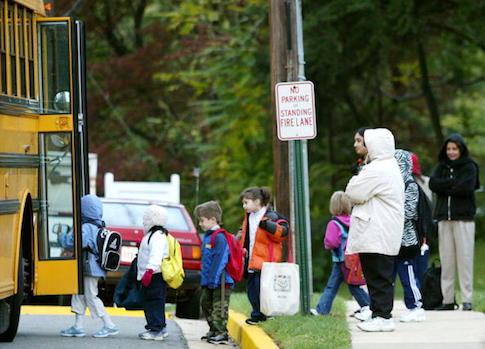Many in the media have pushed a gun-control group's count of school shootings in the aftermath of Tuesday's shooting at Marshall County High School that left 2 dead and 18 injured.
That count, created by Everytown for Gun Safety, claims there have been 11 school shootings thus far in 2018. However, nearly all of the incidents included alongside the Marshall County shooting bear little or no resemblance to that shooting or other well-publicized school shootings, like those at Sandy Hook Elementary or Columbine High School. None of the other events included in the gun-control group's count feature more than one injury, most featured no injuries at all, and one involved a BB gun being shot at a school bus window.
In its threat assessment on school shooters, developed in the wake of the Columbine shooting, the FBI sought to answer "why would a student bring a weapon to school and without any explicable reason open fire on fellow students and teachers?" Despite its clear focus on violence committed against students and faculty during school events, the assessment did not provide an official definition for what a school shooter or a school shooting is.
Everytown for Gun Safety uses its own definition based on what it said is "expert advice and common sense," which the gun-control group claims is "straightforward, fair, and comprehensive." The group said it counts "any time a firearm discharges a live round inside a school building or on a school campus or grounds."
This broad definition places two separate suicides, a January 9 incident where a man shot a BB gun at a bus window resulting in no injuries; a January 10 incident where a student in a criminal justice club accidentally shot a peace officer's real gun at a target on a classroom wall instead of a training gun resulting in no injuries; a January 9 incident where gun shots were fired from somewhere outside of Cal State San Bernardino, which struck a building on campus without injuries; and other incidents next to the murder of a Winston-Salem State University student at a nightclub on the Wake Forest University campus, the January 22 shooting of a 15-year-old at a Dallas-area high school, and Tuesday's Marshall County High School shooting which left 2 dead and 18 others injured.
In its explanation of its count, Everytown includes an open call for new gun-control measures as a result of the number of school shootings it claims occur each year in the United States.
"How many more before our leaders pass common-sense laws to prevent gun violence and save lives," the group asks in its methodology explanation. "Communities all over the country live in fear of gun violence. That's unacceptable. We should feel secure in sending our children to school—comforted by the knowledge that they're safe."
The group claims to have identified 283 school shootings since 2013 using its methodology.
Reporters from outlets like The New York Times, NPR, CNN, Politico, The Huffington Post, and other major media have unquestioningly forwarded the activists' count on Twitter or in pieces for their publications. Peter Alexander of NBC News used the count without revealing who complied it, their political leanings, or any caution over their methodology when questioning Press Secretary Sarah Huckabee Sanders at the White House press briefing on Wednesday.
Many major media outlets have also unquestioningly pushed dubious statistics from gun-control groups in regards to mass shootings. A June 2017 Free Beacon analysis found only 8 of the 154 shootings cited by gun-control activists and major media outlets as mass shootings actually meet the FBI definition of mass murder.
The media's amplification of misleading school shooting counts may be part of the reason a 2017 survey found most parents greatly overestimate the likelihood of a school shooting at their child's school. Thirty-six percent of parents thought it was "highly likely" their local high school would experience a gun incident within the next three years. Only 8.6 percent of the parents, however, said they actually knew of a firearm incident at their local school sometime in the last five years.
